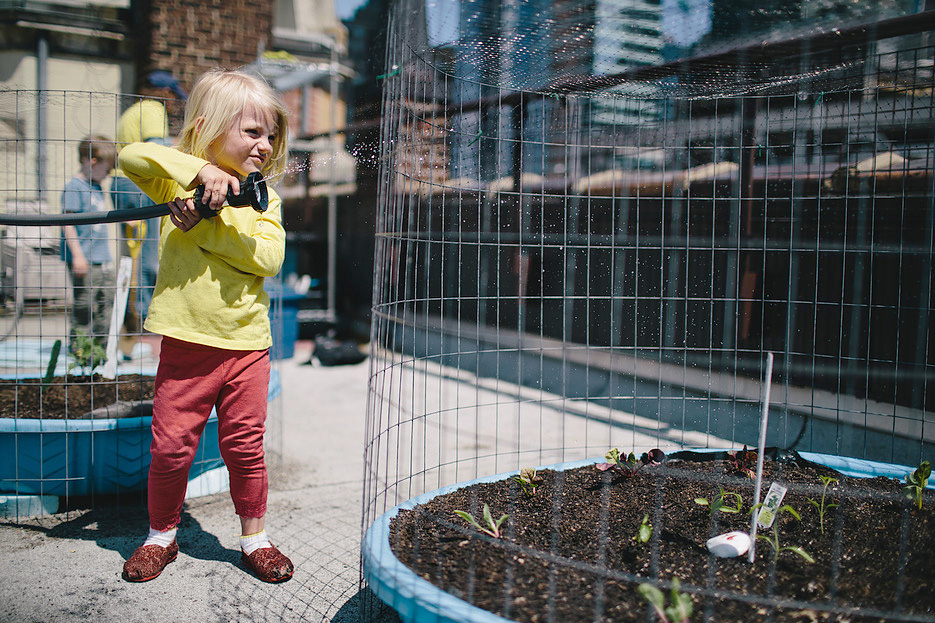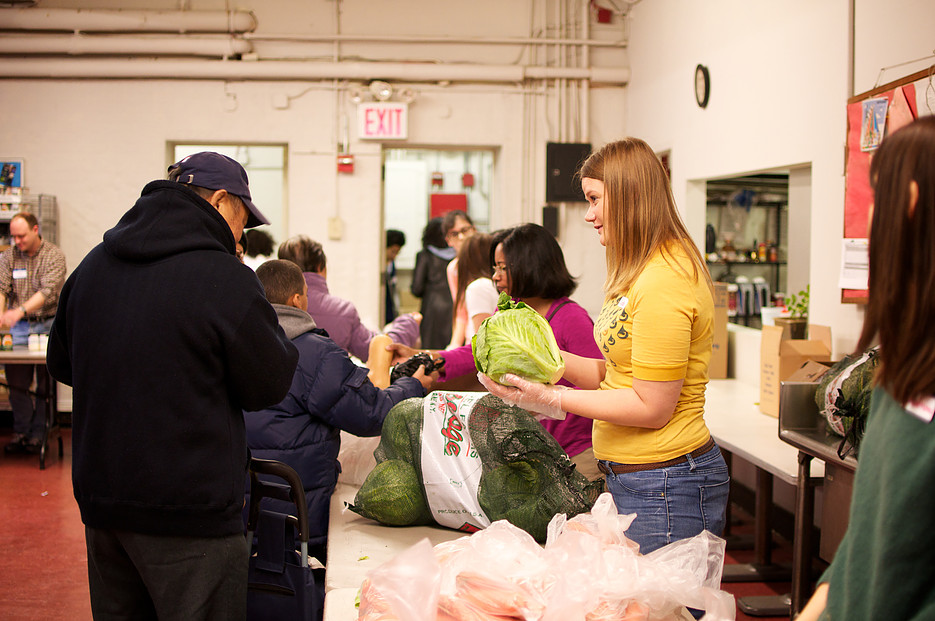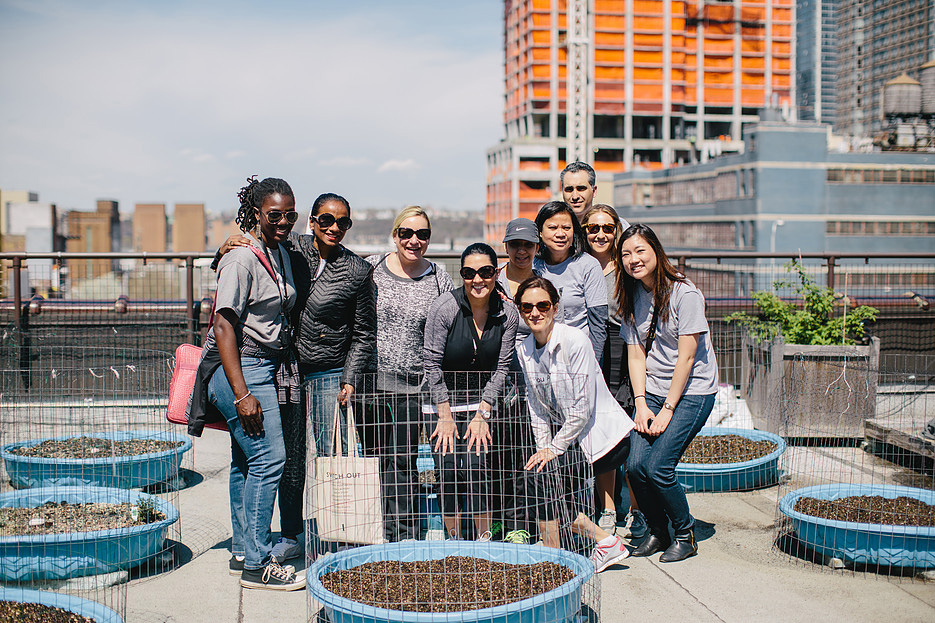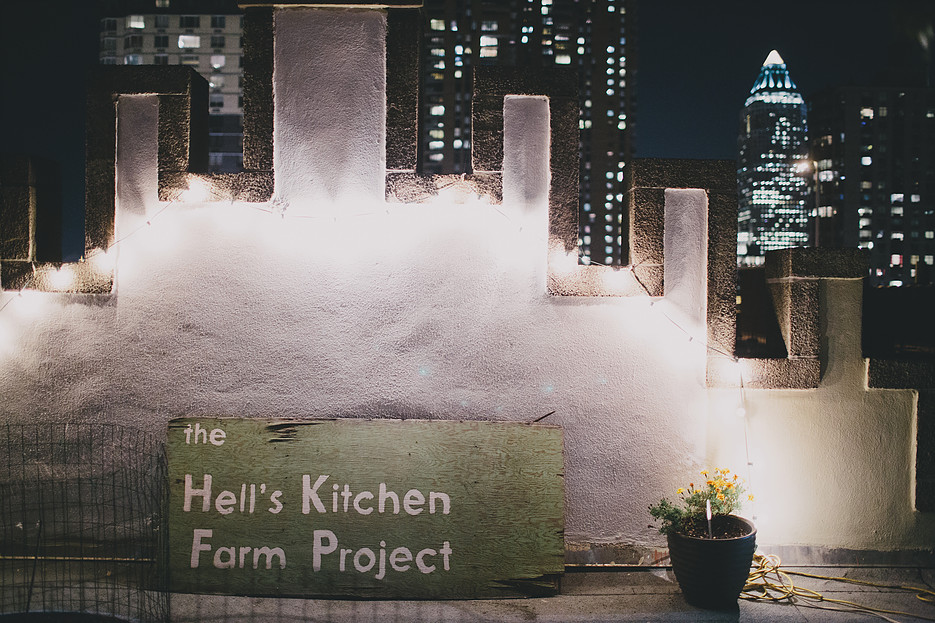
Inside Hell’s Kitchen Farm Project, An Urban Rooftop with An Unexpected Twist
Before building the farm on the rooftop of the Metro Baptist Church in Hell’s Kitchen, Manhattan, the organizers had to make sure they were distributing the soil in a way that didn’t destabilize this one hundred-year-old building. The solution turned out to be simple and unlikely: kiddie pools.
The 4,000-square-foot rooftop holds 52 raised beds in blue kiddie pools that grow fresh fruits and vegetables such as tomatoes, blueberries, lettuce, eggplant, squash, radishes, and raspberries.
For the last seven years, Hell’s Kitchen Farm Project has been a volunteer-run urban rooftop on the fifth floor of 40th Street and 9th Avenue, surrounded by high-rise buildings in all directions, situated directly across from NYC’s Port Authority Bus Terminal on 9th Avenue.
HKFP began with the idea that there aren’t adequate healthy food options in Hell’s Kitchen. All the produce the farm harvests goes to the Rauschenbush Metro Ministries Food Pantry in the building downstairs, one of the initial inspirations for the project. Four organizations– the Clinton Housing Development Company, the Metro Baptist Church, the Rauschenbush Metro Ministries, and the Metropolitan Community Church– collaborated on their shared vision to found the rooftop in 2010. “There weren’t many free affordable vegetables and fruits, so they decided they wanted to do something about it,” Priscila Garcia, a biochemistry college student from Kentucky interning at the farm project for the summer, told Garden Collage on a sunny Saturday morning at the end of her shift.
“There’s a lot of food around, but not a lot of it is good nutritionally, and when it is, it’s very expensive,” Garcia said. “Why would you spend eight dollars on a salad when you could spend two dollars on a pizza and be full?”
The slim options make healthy eating difficult, if not nearly impossible. “7 to 14% of people reported that they consumed NO fruit or vegetables the previous day,” HKFP states on its website. Additionally, New York City’s food insecurity rate is six percent higher than the national rate, a sign on the fourth-floor states in a spot that visitors see right before climbing the final floor to the roof.
The HKFP project is meant to fill that gap. Volunteers come every day to water the plants, and then on Thursday and Saturday morning, different volunteers, who are either from the neighborhood or who found out about the project online, come to tend to the garden– harvesting, cleaning, weeding, and planting.
The harvesting takes place from 10 to 11 AM in the morning so that the produce can be as fresh as possible for the pantry downstairs, which begins prepping food at 11 AM. There’s a lot of food harvested on this small rooftop. “We had a big group on Thursday. They harvested a bunch of lettuce, a bunch of tomatoes,” Garcia said. “And today we harvested two bags of tomatoes, six small bags of blueberries, and basil.” Three hundred pounds of food went to the food pantry during the 2013 season.
The first step, however, is getting up to the fifth floor of the building. The last flight of stairs is particularly steep, but handwriting reads, “You’re almost there!” encouraging volunteers to make the climb.
Basil, cilantro, dill, and several different types of flowers grow in patches of soil hanging from the railing, which, Garcia said, is also a way to make sure the building remains stabilized. In addition to the kiddie pools spreading the weight evenly around the roof, styrofoam blocks placed underneath the pools are also meant to help even out the weight.
Given that the kiddie pools are relatively shallow, the gardeners prefer vegetables that don’t require deep soil to grow, and staffers plan what produce will grow for Spring, Summer, and Fall in advance, starting seedlings if necessary.
HKFP has also branched out to organize multiple community initiatives. Last April, it won the Green Festival Community Award, a $5000 grant to launch a high school internship program, DNAinfo has since reported. “We select about eight students a Summer, and we teach them about food and security, food justice, soil science, plant science, farming, and the politics surrounding food and nutrition,” Garcia explained of the project, which she is also helping organize. Volunteers from different companies, youth groups, or church groups also come in to spend time working on the farm.
There’s been a fair amount of trial and error over the course of creating HKFP. “We have the cages around the kiddie pools to prevent the birds from eating it,” Garcia explained. “Because the first year, the birds just ate the whole harvest.”
Seven years later, an impressive amount of food grows from the kiddie pools on this urban rooftop– a hidden oasis in a neglected corner of NYC that is as charming as it is essential.





































